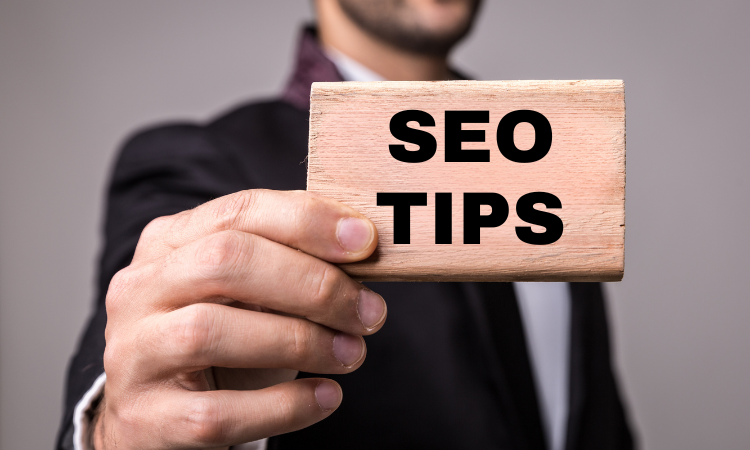BigCommerce is a digital platform that entails the process of creating a store from scratch, designing, marketing, and operating. It is more than a platform that provides a base for your business. With BigCommerce, you can easily build your brand awareness and expand its reach.
Apart from this, you also have to work on multiple things about your website, like its speed, SEO, performance, and more. Search engine optimization is more important than any other strategy. Do you know why? To generate high sales, it’s crucial that your business is seen by consumers, which is only possible with a high search engine ranking. That’s why people hire BigCommerce SEO experts.
Therefore, to help you secure this position for your brand, we are here to help you with this. For high search engine ranking, we are here with 10 SEO techniques that can boost your BigCommerce brand visibility and position.
Search Engine Optimization Strategies
Here, we have mentioned 10 SEO tips for your BigCommerce store growth and high sales.
1. Keyword Research:
This technique involves finding the words and phrases people use when searching for a product or service from their phone online. By using popular and relevant keywords in your website content, you make it easier for search engines to understand what your website is about. Thus, imagine keywords as the words user type when looking for products or services you offer.
2. On-Page Optimization:
On-page optimization means making your website pages both user-friendly and search engine-friendly. This includes using keywords in titles, headings, and content, and it also involves creating URLs, adding descriptive image alt text, and making sure your website loads quickly. These strategies help search engines understand your content better and enhance user experience.
3. High-Quality Content:
Creating valuable and engaging content is crucial, so when your content is informative, helpful, and well-written, people are more likely to stay on your website longer. Search engines like Google notice this and can rank your website higher because it provides a good user experience.
4. Mobile-Friendliness:
With many people using smartphones and tablets, it’s essential that your website looks good and functions well on these devices. Mobile-friendly websites are not only user-friendly. Additionally, search engines support these stores. Ensure your shop is responsive, meaning it adjusts to different screen sizes automatically.
5. Page Speed Optimization:
Nobody likes a slow website! Slow-loading pages can frustrate visitors, causing them to leave your website. Search engines recognize this and favor fast-loading websites. To optimize page speed, you can compress images, reduce unnecessary plugins, and use efficient coding techniques. Additionally, you can use website page speed optimization tools like Website Speedy.
6. Internal Linking:
Internal linking means connecting different pages within your website using clickable links. These links help users navigate your website and also contribute to the reach and trust of your brand. When one page of a website links to another, it makes the linked page more visible to search engines.
7. Backlink Building:
Links pointing to your website from other websites are known as backlinks. Thus, when reputable websites link to your content, search engines consider your website trustworthy and relevant. Building backlinks involves creating informative content, reaching out to influencers, and connecting within your business niche.
8. Regular Updates and Monitoring:
SEO calls for constant work; it’s not a one-time thing. Regularly update your website with fresh content, keeping it relevant and engaging. Additionally, monitor your site’s performance using tools like Google Analytics; after that, analyze the data to understand what’s working and what needs improvement, allowing you to adjust your strategies accordingly.
9. Meta Tags Optimization:
Meta tags are short descriptions that tell search engines and users what a specific page of your website is about. Optimizing meta tags involves crafting catchy and informative titles and descriptions for each page on your website. When these tags are appealing, they can increase the interest of users clicking on your website, which improves your store click-through rate and visibility.
10. User-Friendly URLs:
You might be confused about what a user-friendly URL means. So, a user-centric URL is a web address that is easy to remember and read. Instead of using long counts of numbers and symbols, use clear and descriptive words in your URLs. Simple and relevant URLs not only make it easier for visitors to remember and share links but also help search engines understand the content of the page, improving your site’s SEO.
Thus, these are the SEO techniques for your BigCommerce business. Also, to get assistance from professionals, you can hire BigCommerce SEO experts like MakkPress Technologies, who are also expert BigCommerce website designers. They have teams that work on multiple elements of a website. They are known in the ecommerce designing world. Consequently, they provide multiple services according to the brand-specific demand, such as speed optimization, SEO, design, conversion rate optimization, sales, social media marketing and more.
Conclusion
Therefore, in this blog, we have explained the basics of BigCommerce and SEO. After that, we explained the top 10 search engine optimization tips that are useful for all e-commerce stores. We have covered everything from backlinks to on-page SEO.



